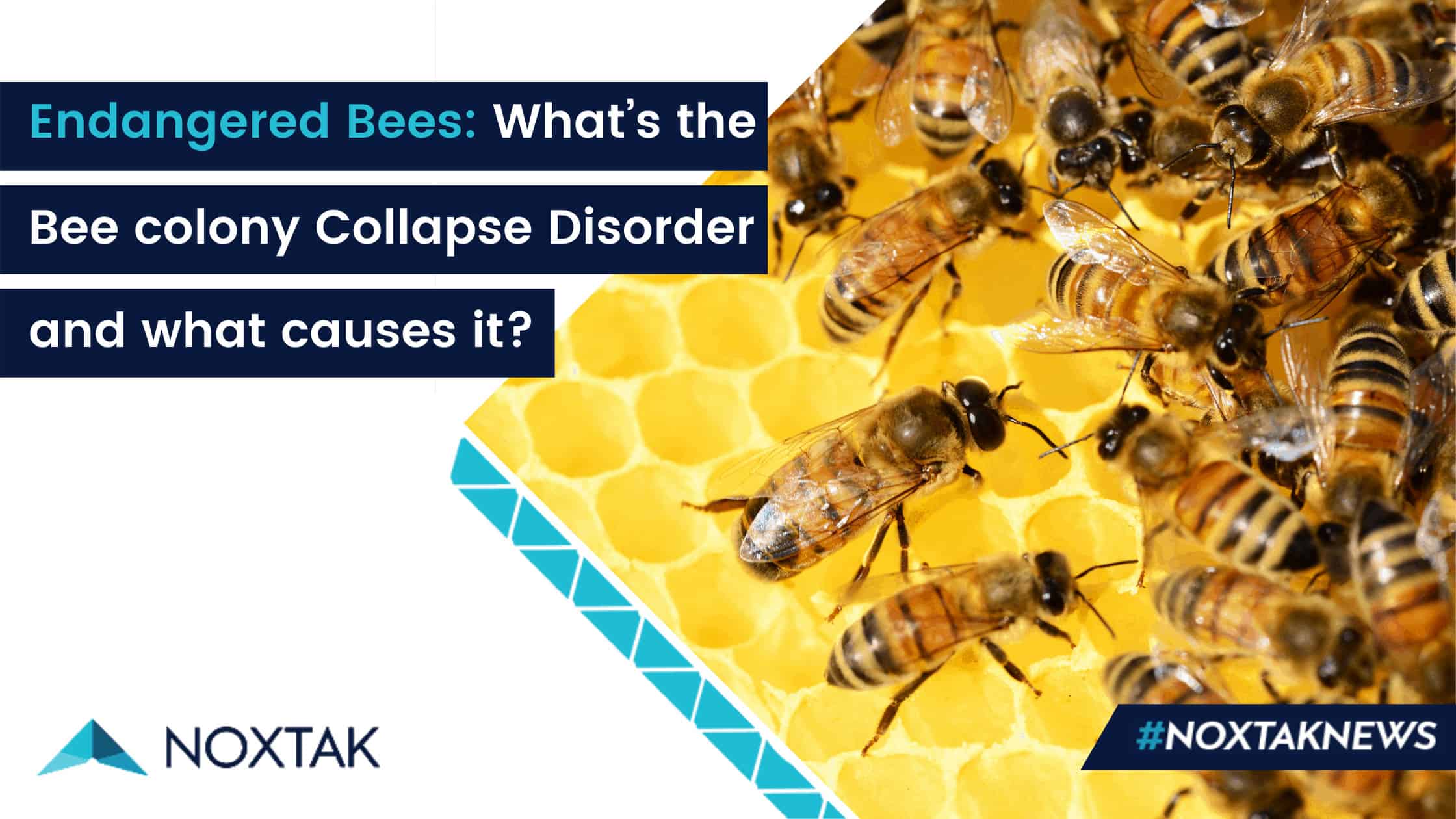Entomologists are currently studying the reasons behind the enormous bee die-off happening worldwide. The phenomenon known as Colony Collapse Disorder might be a contributing factor.
 Honey bees play an essential role in our ecosystem. They keep the ecological balance in nature and the human population simply would not be sustainable without their help. According to the USDA, “During October-December 2006, beekeepers became alarmed that honey bee colonies were dying suddenly across the continental United States. Beekeepers reported losses of 30-90%.”
Honey bees play an essential role in our ecosystem. They keep the ecological balance in nature and the human population simply would not be sustainable without their help. According to the USDA, “During October-December 2006, beekeepers became alarmed that honey bee colonies were dying suddenly across the continental United States. Beekeepers reported losses of 30-90%.”
Pesticides, herbicides, poor farming practices, climate change, EMFs, and many other factors have been blamed for their disappearance; and while they have much to do with it, the phenomenon known as Colony Collapse Disorder is another contributing factor.
The NOXTAK Center has made it a priority to raise awareness and care about Bees. That’s why in this volume of Endangered Bees, we want to talk about the Bee Colony Collapse Disorder, a poorly known and yet highly important phenomenon to understand the accelerated bee extinction.
What’s the Bee Colony Collapse Disorder?
Colony Collapse Disorder (CCD) was first reported in 2006. The term is often incorrectly used as a blanket term to refer to the trend of bee decline. However, this decline has a number of causes and takes a number of forms. CCD only refers to a phenomenon characterized by the sudden loss of the vast majority of the hive, leaving a queen, full brood (larvae) cells, and full honey stores behind.
In collapsed hives, no dead bees are found, puzzling scientists and posing a major challenge to the study of the disease. The USDA has been studying the phenomenon since 2009, when it became apparent that Colony Collapse was not something that would disappear on its own.
What causes Colony Collapse Disorder?
CCD is believed to be complex and a result of multiple factors. The Agricultural Research Service of the U.S. Department of Agriculture organized efforts to address the CCD crisis through surveys and data collection, samples analysis, and mitigation and preventive measures. A variety of possible causes of CCD were suggested. They included chemical contamination of colony food stores or beeswax; poisoning from pesticides, including nicotine-based insecticides known as neonicotinoids (the use of which has been restricted in some countries); possible lack of genetic diversity in colonies; and infection of colonies by pathogens or parasites, including known honeybee parasites such as the single-celled microsporidians (parasitic fungus) Nosema ceranae and N. apis, and the invasive varroa mite (Varroa destructor).
Electromagnetic radiation caused by mobile phones is thought to have effects on the ability of bees to navigate, causing whole colonies of bees to disappear. According to the paper Colony Collapse Disorder and their Causes, by Shweta Patel and Pramod Mall, some researchers in India studied the effects of cell phone radiation on honeybees by sending electromagnetic waves through the hives twice a day for fifteen minutes. As a result, after three months, “bees stopped producing honey, egg production by the queen bee halved and the size of the hive dramatically reduced.
They also highlighted that animals that depend on the natural electrical, magnetic, and electromagnetic fields for their orientation and navigation through earth’s atmosphere are confused by the much stronger and constantly changing artificial fields created by technology and fail to navigate back to their home environments.
Bees sense the Earth’s magnetic field and use this field to determine the direction in which new honeycombs should be built in the dark in nesting cavities. “In case man-made EMF disturbs the way honeybees sense the Earth magnetic field, they could be affected in their homing ability and/or the accuracy of the waggle dance”, the scientists stated.
Our part in saving the Bees
Many bright minds and companies such as NOXTAK are currently working hard to save the bees in whatever way they can contribute. But there is some good news: you don’t have to be an expert or own a company to do your part. There are some small, yet significant actions you can take to save the bees:
- Plant flowers whenever and wherever you can. Try to use plants that are native to your area so they can prosper.
- Avoid treating your yard with pesticides, especially when flowers are in full bloom.
- Buy local, raw honey. Raw honey is the purest form of honey you can buy, and it puts the money into the pockets of hard-working local beekeepers.
- Let dandelions, clover, and wildflowers grow in your yard and garden. They make great food sources for honey bees.
Finally, it’s important to stay informed of global bee health and how to contribute to protecting them from the many threats they face. After all, bees have helped to provide for the human population, and they deserve to live happy and healthy lives in return.
